The Happier Lives Institute (HLI) is a non-profit research institute that seeks to find the best ways to improve global wellbeing, then share what we find. Established in 2019, we have pioneered the use of subjective wellbeing measures (aka ‘taking happiness seriously’) to work out how to do the most good.
HLI is currently funding constrained and needs to raise a minimum of 205,000 USD to cover operating costs for the next 12 months. We think we could usefully absorb as much as 1,020,000 USD, which would allow us to expand the team, substantially increase our output, and provide a runway of 18 months.
This post is written for donors who might want to support HLI’s work to:
- identify and promote the most cost-effective marginal funding opportunities at improving human happiness.
- support a broader paradigm shift in philanthropy, public policy, and wider society, to put people’s wellbeing, not just their wealth, at the heart of decision-making.
- improve the rigour of analysis in effective altruism and global priorities research more broadly.
A summary of our progress so far:
- Our starting mission was to advocate for taking happiness seriously and see if that changed the priorities for effective altruists. We’re the first organisation to look for the most cost-effective ways to do good, as measured in WELLBYs (Wellbeing-adjusted life years)[1]. We didn’t invent the WELLBY (it’s also used by others e.g. the UK Treasury) but we are the first to apply it to comparing which organisations and interventions do the most good.
- Our focus on subjective wellbeing (SWB) was initially treated with a (understandable!) dose of scepticism. Since then, many of the major actors in effective altruism’s global health and wellbeing space seem to have come around to it (e.g., see these comments by GiveWell, Founders Pledge, Charity Entrepreneurship, GWWC). [Paragraph above edited 10/07/2023 to replace 'all' with 'many' and remove a name (James Snowden) from the list. See below]
- We’ve assessed several top-regarded interventions for the first time in terms of WELLBYs: cash transfers, deworming, psychotherapy, and anti-malaria bednets. We found treating depression is several times more cost-effective than either cash transfers or deworming. We see this as important in itself as well as a proof of concept: taking happiness seriously can reveal new priorities. We've had some pushback on our results, which was extremely valuable. GiveWell’s own analysis concludes treating depression is 2x as good as cash transfers (see here, which includes our response to GiveWell).
- We strive to be maximally philosophically and empirically rigorous. For instance, our meta-analysis of cash transfers has since been published in a top academic journal. We’ve shown how important philosophy is for comparing life-improving against life-extending interventions. We’ve won prizes: our report re-analysing deworming led GiveWell to start their “Change Our Mind” competition. Open Philanthropy awarded us money in their Cause Exporation Prize.
- Our work has an enormous global scope for doing good by influencing philanthropists and public policy-makers to both (1) redirect resources to the top interventions we find and (2) improve prioritisation in general by nudging decision-makers to take a wellbeing approach (leading to resources being spent better, even if not ideally).
- Regarding (1), we estimate that just over the period of Giving Season 2022, we counterfactually moved around $250,000 to our top charity, StrongMinds; this was our first campaign to directly recommend charities to donors[2].
- Regarding (2), the Mental Health Funding Circle started in late 2022 and has now disbursed $1m; we think we had substantial counterfactual impact in causing them to exist. In a recent 80k podcast, GiveWell mention our work has influenced their thinking (GiveWell, by their count, influences $500m a year)[3].
- We’ve published over 25 reports or articles. See our publications page.
- We’ve achieved all this with a small team. Presently, we’re just five (3.5 FTE researchers). We believe we really 'punch above our weight', doing high impact research at a low cost.
- However, we are just getting started. It takes a while to pioneer new research, find new priorities, and bring people around to the ideas. We’ve had some impact already, but really we see that traction as evidence we’re on track to have a substantial impact in the future.
What’s next?
Our vision is a world where everyone lives their happiest life. To get there, we need to work out (a) what the priorities are and (b) have decision-makers in philanthropy and policy-making (and elsewhere) take action. To achieve this, the key pieces are:-
- conducting research to identify different priorities compared to the status quo approaches (both to do good now and make the case)
- developing the WELLBY methodology, which includes ethical issues such as moral uncertainty and comparing quality to quantity of life
- promoting and educating decision-makers on WELLBY monitoring and evaluation
- building the field of academic researchers taking a wellbeing approach, including collecting data on interventions.
Our organisational strategy is built around making progress towards these goals. We've released, today, a new Research Agenda for 2023-4 which covers much of the below in more depth.
In the next six months, we have two priorities:
Build the capacity and professionalism of the team:
- We’re currently recruiting a communications manager. We’re good at producing research, but less good at effectively telling people about it. The comms manager will be crucial to lead the charge for Giving Season this year.
- We’re about to open applications for a Co-Director. They’ll work with me and focus on development and management; these aren’t my comparative advantage and it’ll free me up to do more research and targeted outreach.
- We’re likely to run an open round for board members too.
And, to do more high-impact research, specifically:
- Finding two new top recommended charities. Ideally, at least one will not be in mental health.
- To do this, we’re currently conducting shallow research of several causes (e.g., non-mood related mental health issues, child development effects, fistula repair surgery, and basic housing improvements) with the aim of identifying promising interventions.
- Alongside that, we’re working on wider research agenda, including: an empirical survey to better understand how much we can trust happiness surveys; summarising what we’ve learnt about WELLBY cost-effectiveness so we can share it with others; revise working papers on the nature and measurement of wellbeing; a book review Will MacAskill’s ‘What We Owe The Future’.
The plan for 2024 is to continue developing our work by building the organisation, doing more good research, and then telling people about it. In particular:
- Investigate 4 or 5 more cause areas, with the aim of adding a further three top charities by the end of 2024.
- Develop the WELLBY methodology, exploring, for instance, the social desirability bias in SWB scales
- Explore wider global priorities/philosophical issues, e.g. on the badness of death and longtermism.
- For a wider look at these plans, see our Research Agenda for 2023-4, which we’ve just released.
- If funding permits, we want to grow the team and add three researchers (so we can go faster) and a policy expert (so we can better advocate for WELLBY priorites with governments)
- (maybe) scale up providing technical assistance to NGOs and researchers on how to assess impact in terms of WELLBYs (we do a tiny amount of this now)
- (maybe) launch a ‘Global Wellbeing Fund’ for donors to give to.
- (maybe) explore moving HLI inside a top university.
We need you!
We think we’ve shown we can do excellent, important research and cause outsized impact on a limited budget. We want to thank those who’ve supported us so far. However, our financial position is concerning: we have about 6 months’ reserves and need to raise a minimum of 205,000 USD to cover our operational costs for the next 12 months. This is even though our staff earn about ½ what they would in comparable roles in other organisations. At most, we think we could usefully absorb 1,020,000 USD to cover team expansion to 11 full time employees over the next 18 months.
We hope the problem is that donors believe the “everything good is fully funded” narrative and don’t know that we need them. However, we’re not fully-funded and we do need you! We don’t get funding from the two big institutional donors, Open Philanthropy and the EA Infrastructure fund (the former doesn’t fund research in global health and wellbeing; we didn’t get feedback from the latter). So, we won’t survive, let alone grow, unless new donors come forward and support us now and into the future.
Whether or not you’re interested in supporting us directly, we would like donors to consider funding our recommended charities; we aim to add two more to our list by the end of 2023. We expect these will be able to absorb millions or tens of dollars, and this number will expand as we do more research.
We think that helping us ‘keep the lights on’ for the next 12-24 months represents an unusually large counterfactual opportunity for donors as we expect our funding position to improve. We’ll explore diversifying our funding sources by:
- Seeking support from the wider world of philanthropy (where wellbeing and mental health are increasing popular topics)
- Acquiring conventional academic funding (we can’t access this yet as we’re not UKRI registered, but we’re working on this; we are also in discussions about folding HLI into a university)
- Providing technical consultancy on wellbeing-based monitoring and evaluation of projects (we’re having initial conversations about this too).
To close, we want to emphasise that taking happiness seriously represents a huge opportunity to find better ways to help people and reallocate enormous resources to those things, both in philanthropy and in public-policymaking. We’re the only organisation we know of focusing on finding the best ways to measure and improve the quality of lives. We sit between academia, effective altruism and policy-making, making us well-placed to carry this forward; if we don’t, we don’t know who else will.
If you’re considering funding us, I’d love to speak with you. Please reach out to me at michael@happierlivesinstitute.org and we’ll find time to chat. If you’re in a hurry, you can donate directly here.
Appendix 1: HLI budget
- ^
One WELLBY is equivalent to a 1-point increase on a 0-10 life satisfaction scale for one year
- ^
The total across two matching campaigns at the Double-Up Drive, the Optimus Foundation as well as donations via three effective giving organisations (Giving What We Can, RC Forward, and Effectiv Spenden) was $447k. Note not all this data is public and some public data is out of date. The sum donated be larger as donations may have come from other sources. We encourage readers to take this with a pinch of salt and how to do more accurate tracking in future.
- ^
Some quotes about HLI’s work from the 80k podcast:
[Elie Hassenfeld] ““I think the pro of subjective wellbeing measures is that it’s one more angle to use to look at the effectiveness of a programme. It seems to me it’s an important one, and I would like us to take it into consideration[Elie] “…I think one of the things that HLI has done effectively is just ensure that this [using WELLBYs and how to make tradeoffs between saving and improving lives] is on people’s minds. I mean, without a doubt their work has caused us to engage with it more than we otherwise might have. […] it’s clearly an important area that we want to learn more about, and I think could eventually be more supportive of in the future.”
[Elie] “Yeah, they went extremely deep on our deworming cost-effectiveness analysis and pointed out an issue that we had glossed over, where the effect of the deworming treatment degrades over time. […] we were really grateful for that critique, and I thought it catalysed us to launch this Change Our Mind Contest. ”

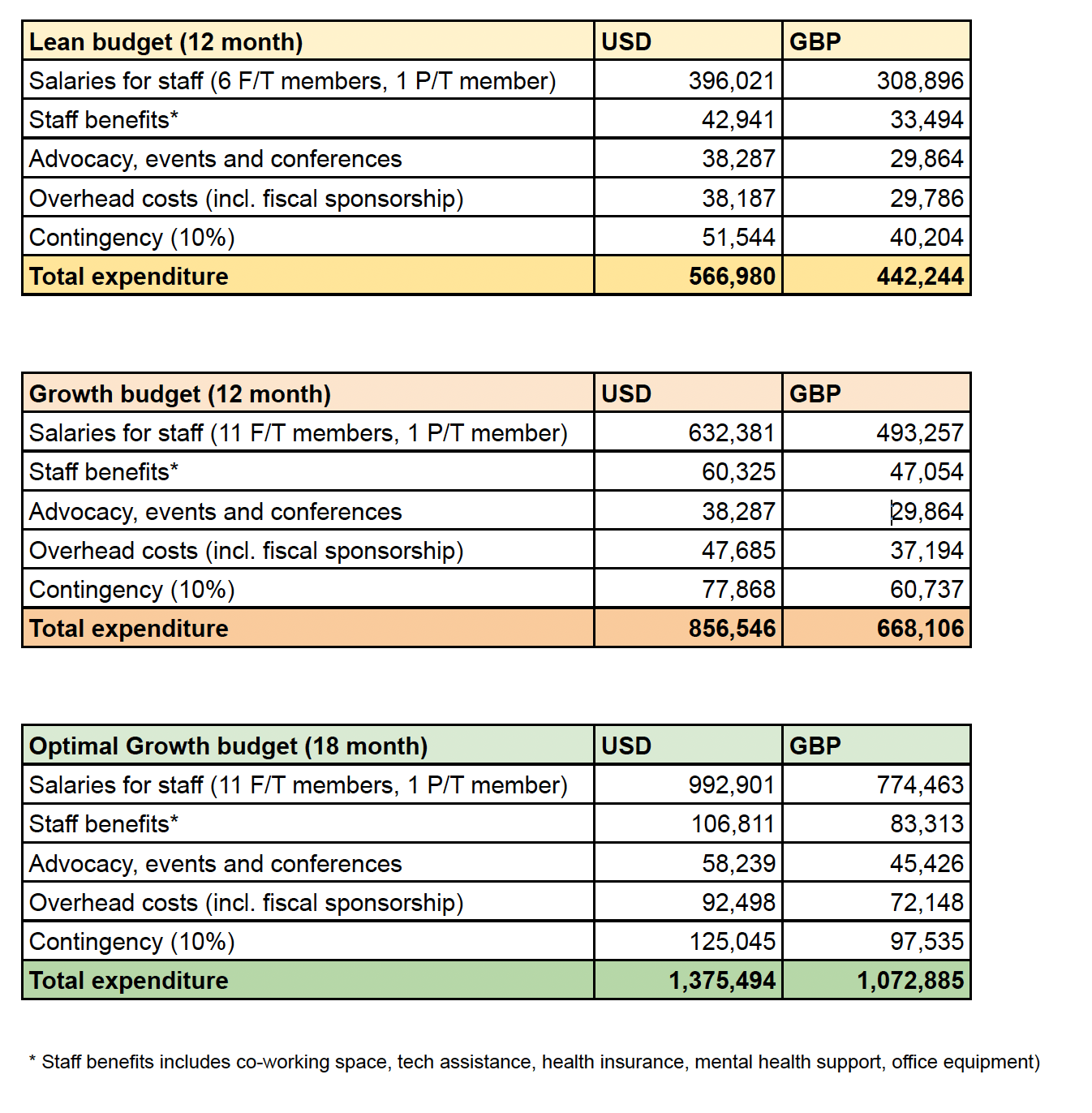

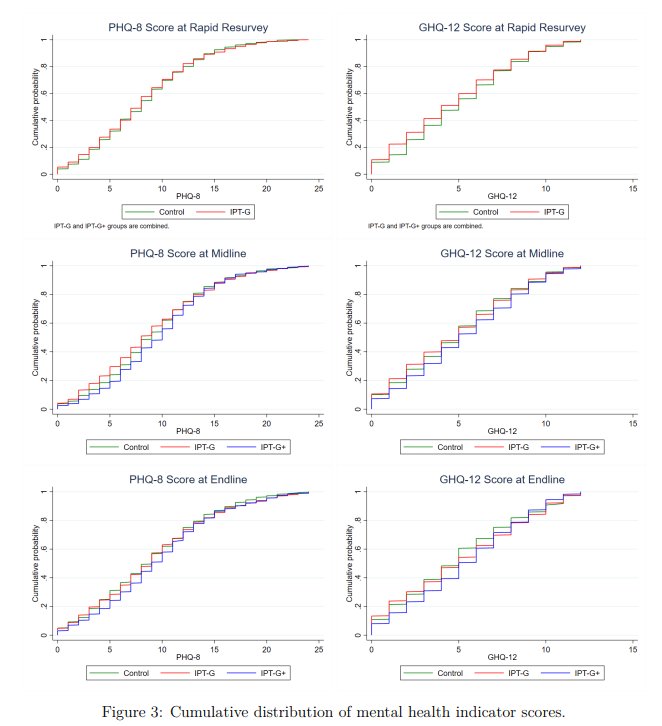
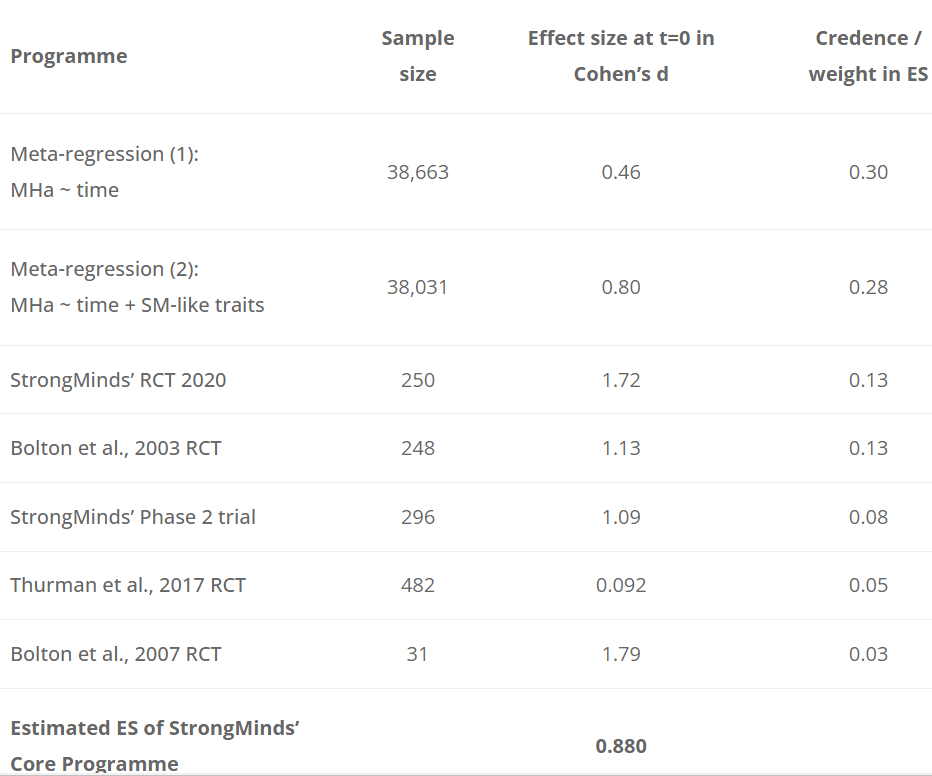
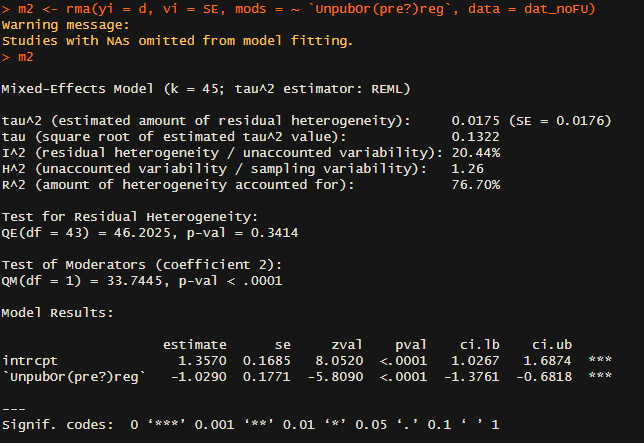
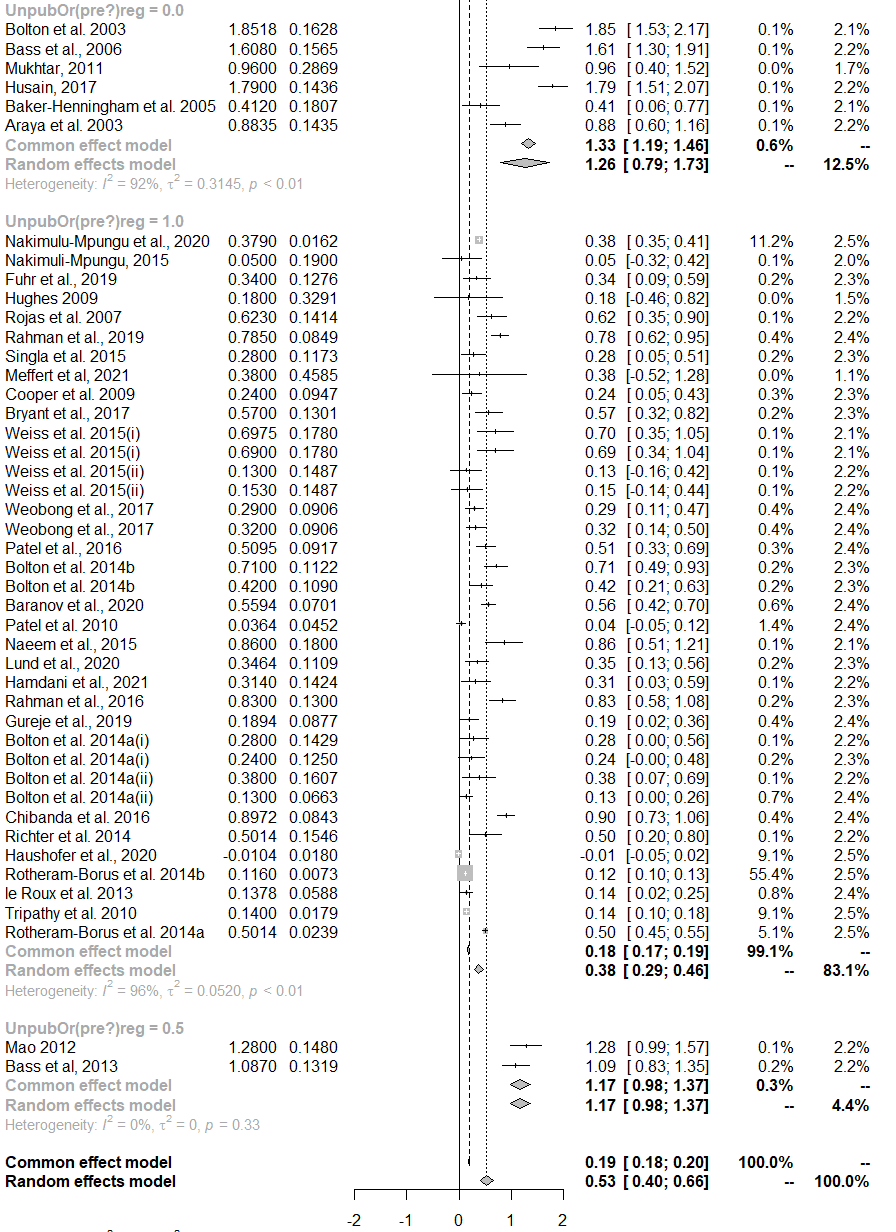
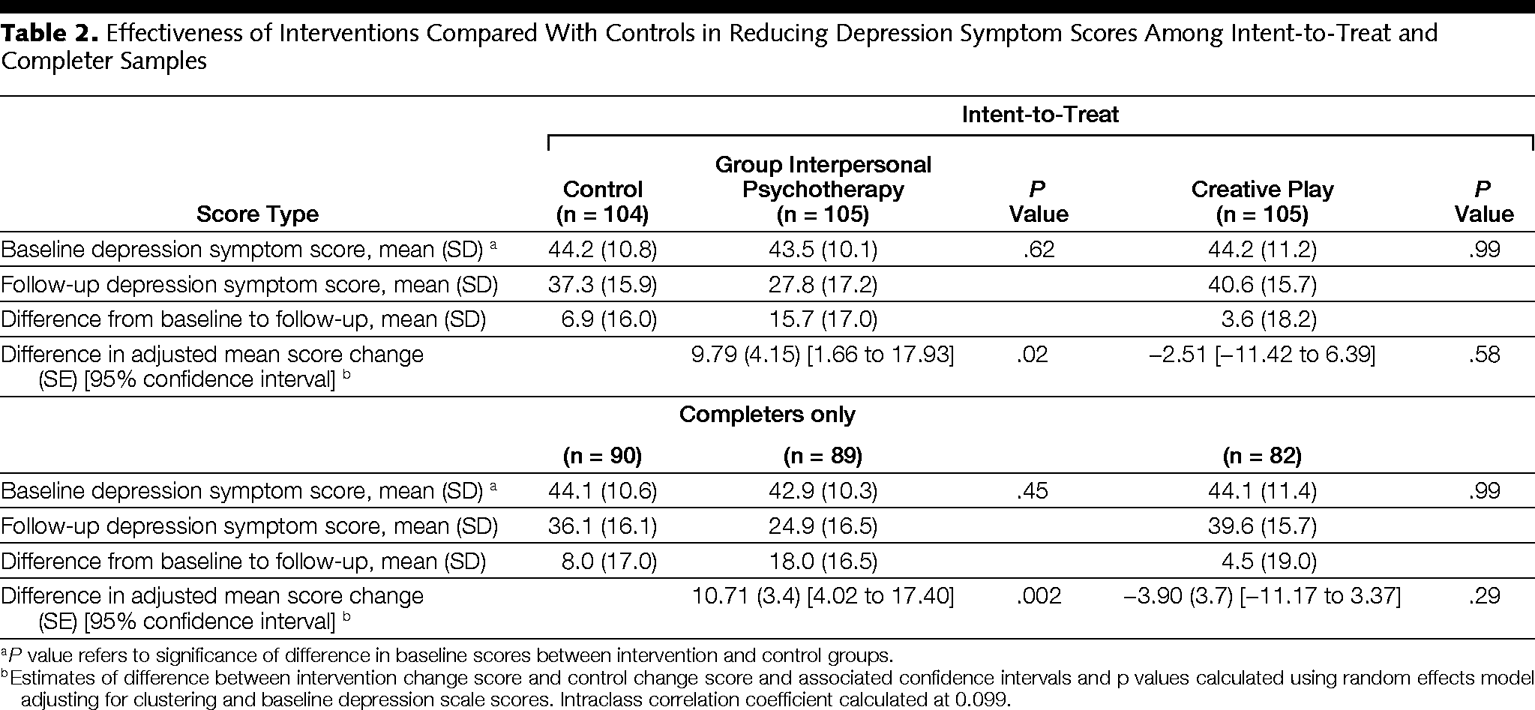
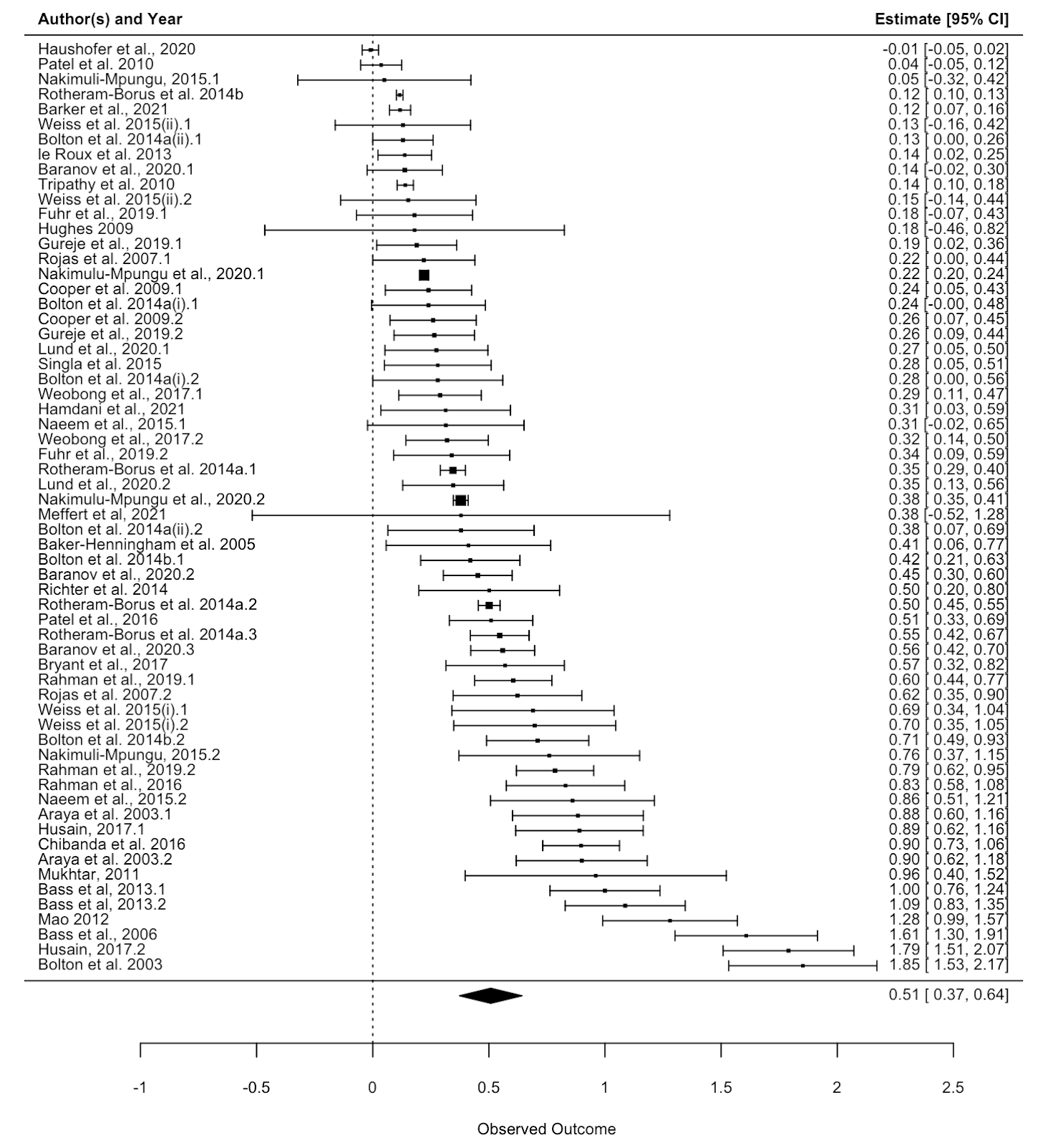
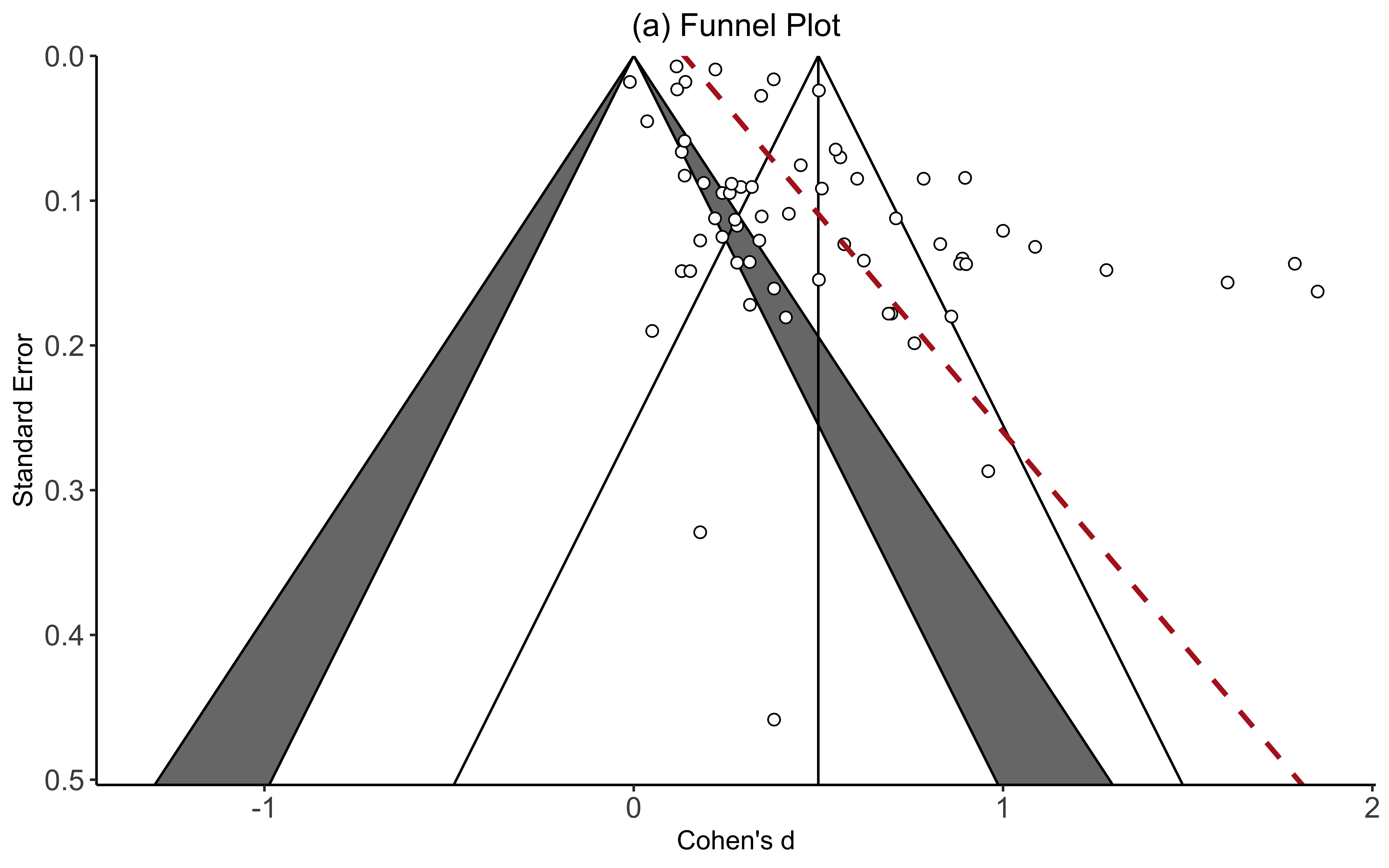
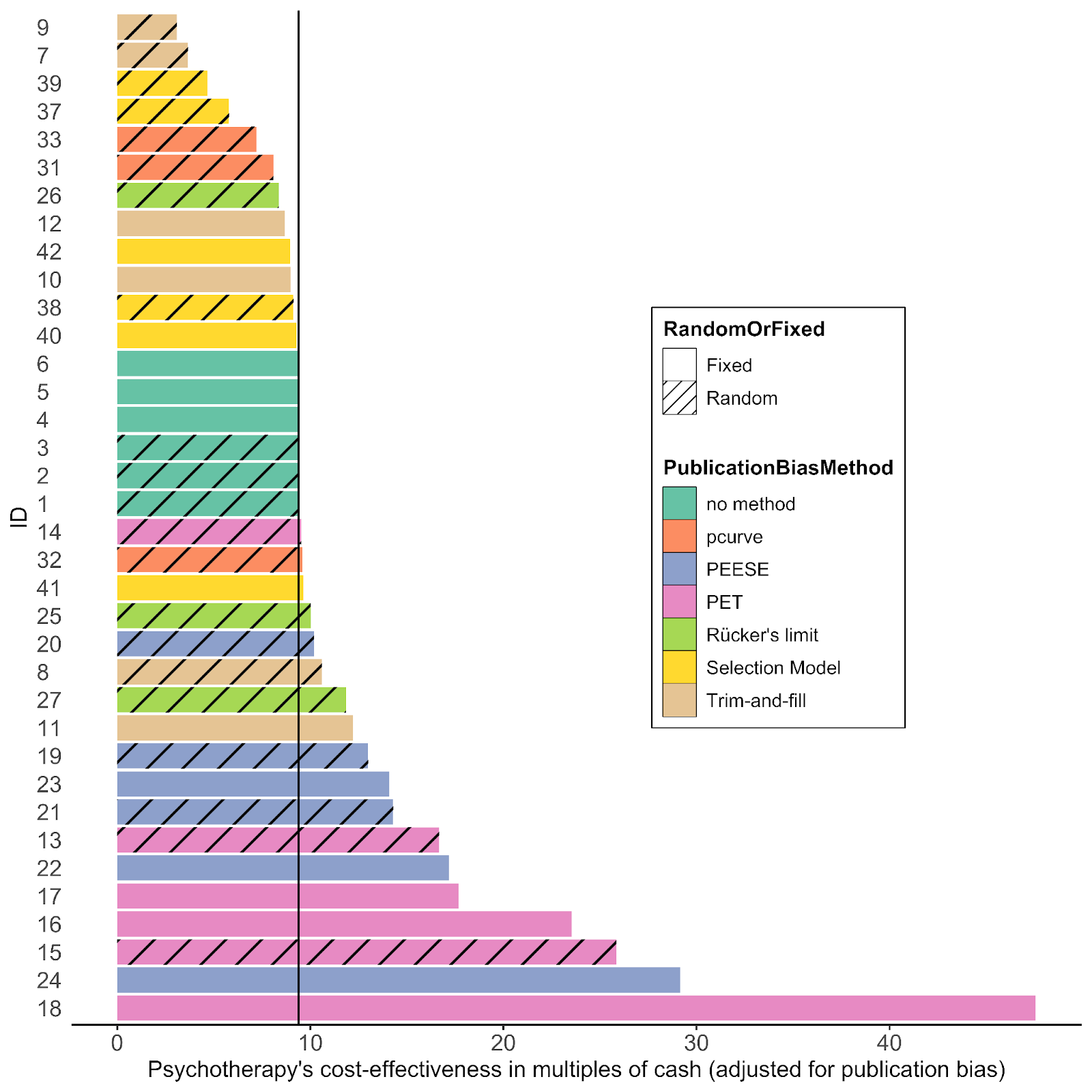
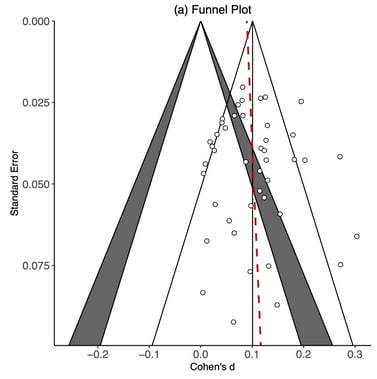
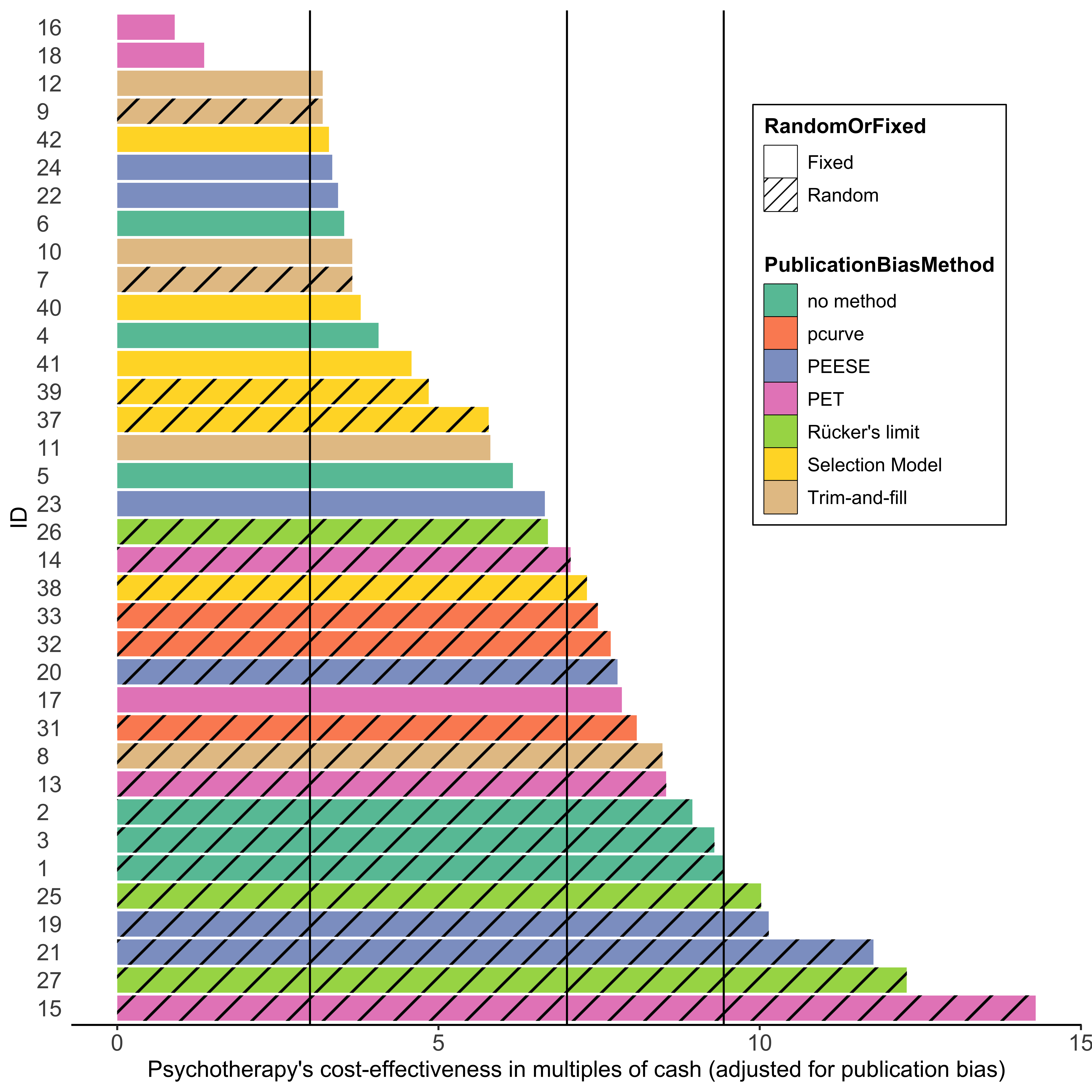
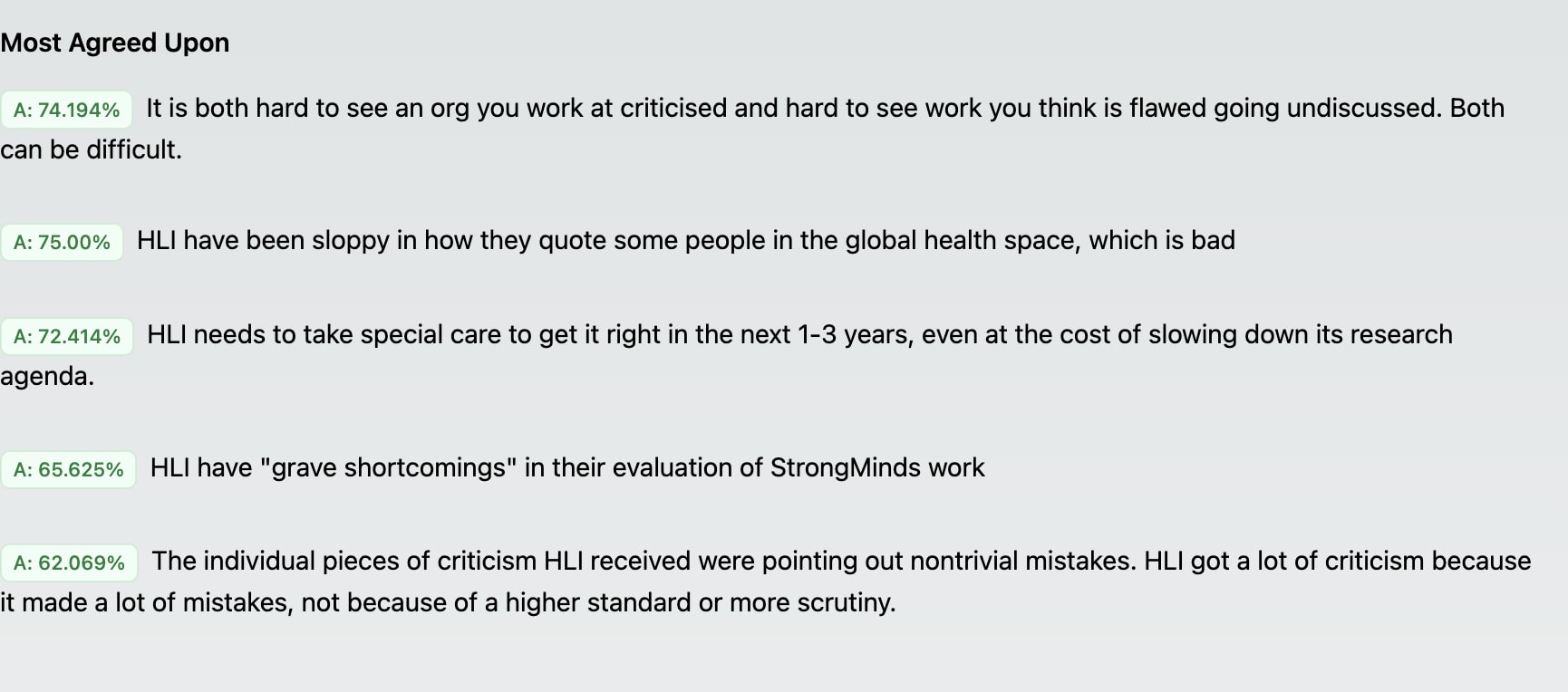
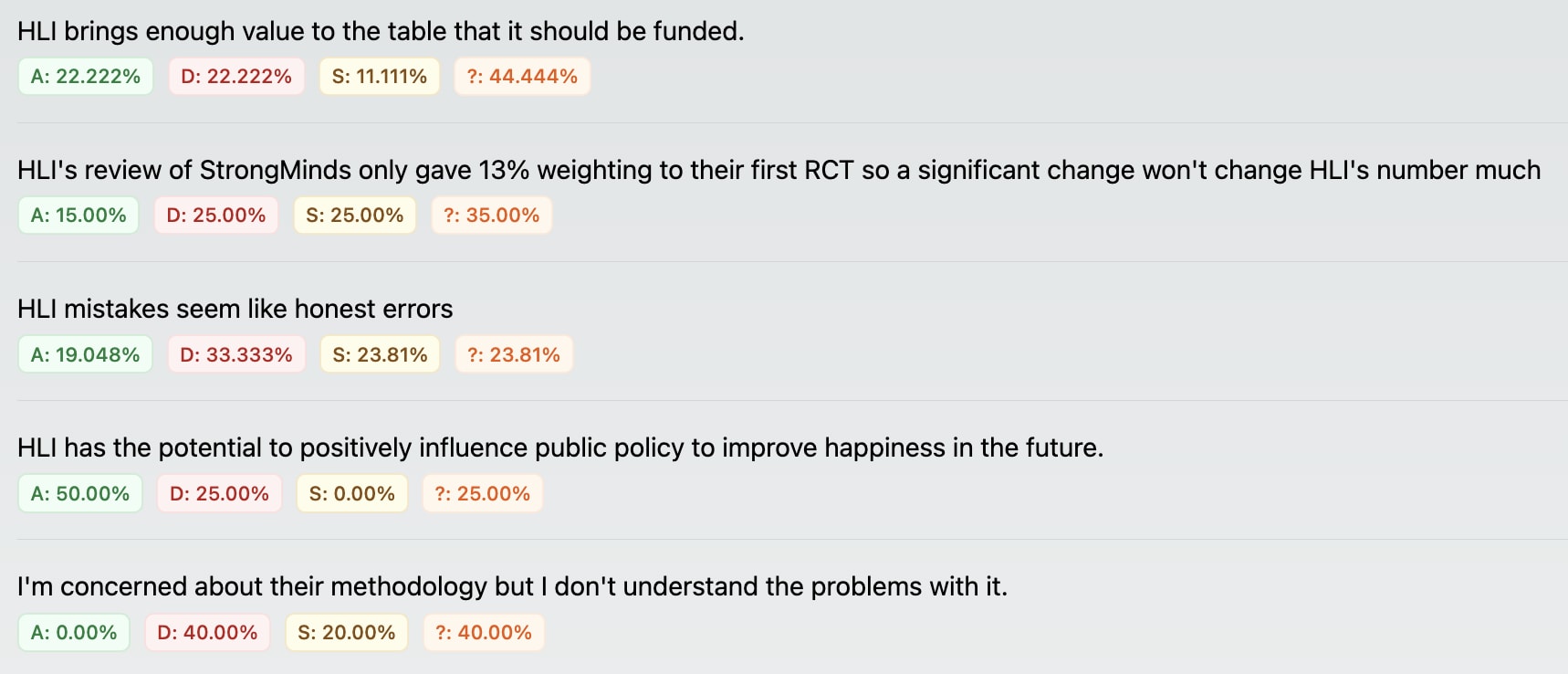

[Own views]
Nice one 100% agree no need to check in again!